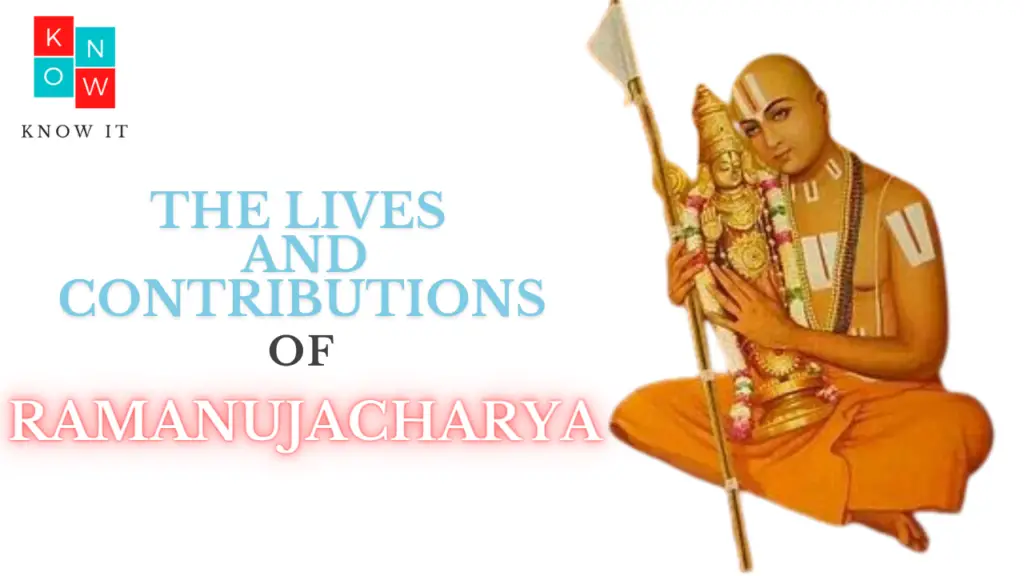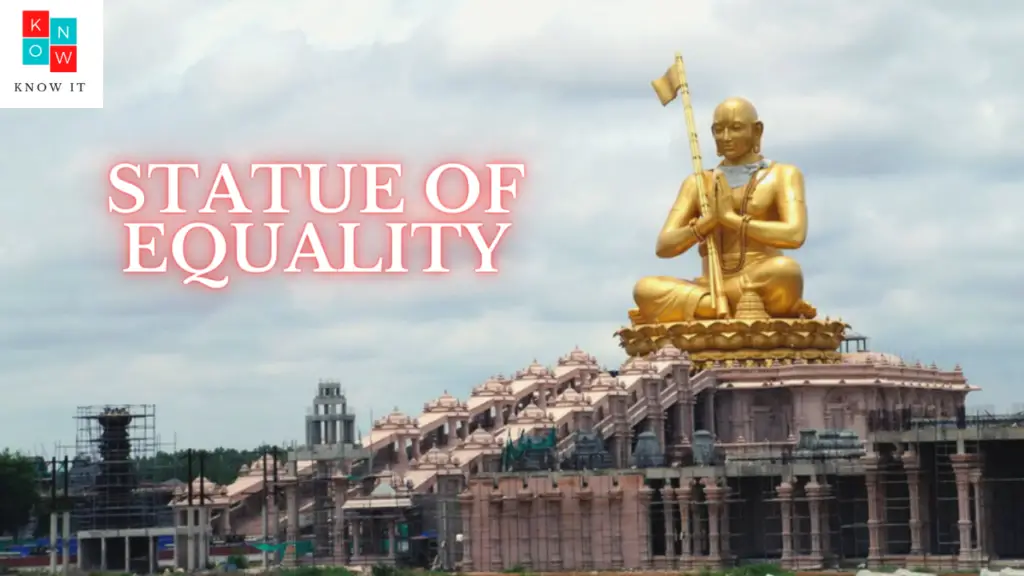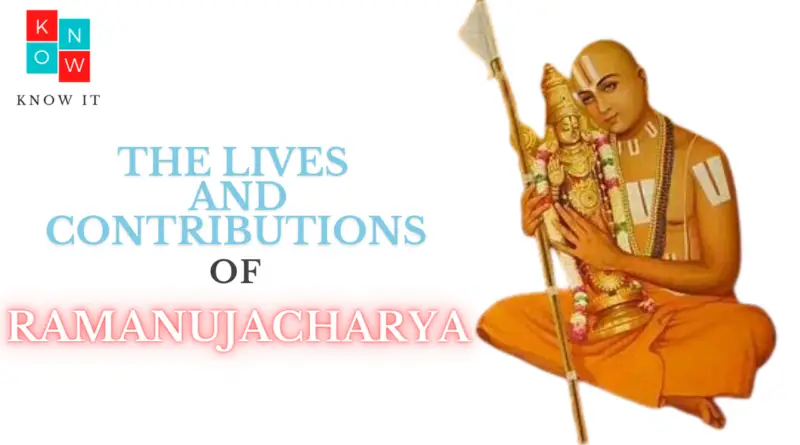The Lives and Contributions of Ramanuja
The Life, Contributions, and Legacy of Ramanuja
Ramanuja was a Hindu theologian, philosopher, and poet who lived from 1017 to 1137. He was born in Tamil Nadu.
As per his mother’s wishes, he married at the age of 16. His marriage was quite unhappy and he felt that since his wife did not cooperate with him in spiritual exercises, he decided to leave her and became a sanyasi and went to Srirangam. Ramanujacharya became a religious leader who was the head of the Srirangam monastery, popularizing Vaishnavism. He left Srirangam when his teachings were not liked by its rulers, who came from the Chola dynasty.
Ramanuja developed a philosophical system called Vishishtadvaita Vedanta. He is the founder of the Sri Vaishnava sect of Hinduism. Ramanujacharya is credited with uniting and establishing the Sri Vaishnavism tradition on a firm foundation and for systematizing the theology, worship, philosophy and practice of what he claimed.

The Central Themes within Ramanuja's Teachings
The central themes within Ramanuja’s teachings are:
- The Supreme Reality is Vishnu and he is the only object of worship
- Vishnu is all-pervading, pure consciousness and the cause of everything
- There are three basic types of souls: those that have been liberated from material existence, those that are still in bondage to material existence but will be liberated in the future, and those who are still bound to material existence.
Brahman is the universe and all matter, while Brahman’s existence is dependent on souls and matter. Brahman is considered to be qualitatively distinct from God but still composed of the interrelated modes of God’s body.
He discusses how two aspects of Brahman can be different from each other but still one and the same thing. The universe is distinct, but it’s a part of Brahman nonetheless. It is a quality that can exist on its own without relying on other things.
What is the Role of Philosophical Debate Within Vaishnavism?
Vishnu and they believe in the philosophy of dualism. They believe that everything in the universe is a part of God. This includes the material world, time, space, and even living beings. These followers also believe that there are two forms to God- one is for the material world and one for the spiritual world.
The Vaishnavas, followers of Vishnu and his incarnations, have traditionally been a philosophical school of thought. They have been at the forefront of many intellectual debates. One such debate is the aham brahmasmi discussion, which has been going on for centuries.
Aham brahmasmi means “I am Brahman” in Sanskrit. This phrase is attributed to Lord Krishna in the Bhagavad Gita (7:26). The phrase is interpreted as Krishna saying that he and Brahman are one and the same.
Writings of Ramanujacharya
Ramanujacharya composed nine monumental works known as ‘Navaratnas’. One of the most majestic writings of Ramanujacharya is “Sri Bhasya” which is based on his philosophy of Advaita Vedanta.
His other works include “Vedanta Sangraha”, “Vedanta Sara”, “Vedanta Deepa”, “Gita Bhasya”, “Nithya Grantham”, “Gadhya Thrayam.”
Vedanta Sangraha is a famous text that advocates the philosophies of the Upanishads. “Vedanta Sara” and “Vedanta Deepa” are two of the earliest known texts that were written on Vedantic philosophy. They are relatively brief commentaries on the “Vedanta Sutras.” Gita Bhasya is a commentary on the Bhagavad Gita. It is one of the most influential texts in the field of Hindu philosophy and has been studied by many scholars. Nithya Grantham deals with the devotional practices and daily rituals that are meant for his followers. Gadhya Thrayam is a Hindu scripture that combines three other works. The work conveys a certain level of spirituality while not being philosophical in tone.
Statue of Equality

In 2014, Sri Chinna Jeeyar approached up with the idea to monumentalize the 1000th anniversary of Shri Ramanuja’s training by constructing the Statue of Equality. The statue is constructed on an estimated 34 acres with a budget of Rs.1000 crore in Hyderabad. It consists of a 216-foot-high statue of Ramanuja and is encircled by 108 Divyadesams (model temples) and includes an educational museum.



